
by: SEO Strategist
Ashot Nanayan
Ashot Nanayan is the CEO and Founder of DWI and a seasoned SEO strategist. With a proven track record of...
All Articles by Ashot Nanayan
July 31, 2025
4 min. read
Life is too short to dedicate our time to link-building 24/7. You should have linkable assets that earn backlinks organically while you’re sleeping. After running dozens of SEO campaigns across competitive industries, I’ve seen which types of assets attract links, how to create them with purpose, and how to steal what’s already working for your competitors. Whether you’re building from scratch or looking to improve what you already have, understanding linkable assets is key to long-term growth.
In this guide, I’ll break down what linkable assets are, the most effective types, and examples you can learn from or replicate. If you’re serious about building backlinks the smart way, without constantly doing outreach, keep reading.
A linkable asset is any piece of content or tool on your website that’s so useful, interesting, or unique that other websites naturally want to link to it. It can be a detailed guide, a statistic page, a free tool, a study, or even a well-designed infographic. The idea is simple: instead of begging for backlinks, you create something that people find valuable enough to reference on their own.
Having linkable assets is important because it helps you earn backlinks in a more natural and sustainable way. If your entire backlink profile consists of homepage links, service page links, or obviously placed guest post links, it begins to appear unnatural to Google.

The biggest benefit is that linkable assets save time and energy in the long run. Link-building outreach will always be part of SEO, but having content that works for you behind the scenes means you’re not starting from scratch every time.
One strong asset can attract hundreds of backlinks over the years without constant effort. It’s one of the smartest ways to scale SEO without burning out or relying on low-quality tactics.
| Asset Type | What It Is | Best For Attracting Links From | Linkability Score (1-10) |
|---|---|---|---|
| Original Research & Statistics | Data-backed insights, surveys, industry stats | Journalists, bloggers, B2B brands | 10 |
| Infographics & Visual Explainers | Graphic summaries of complex topics | Visual content sites, Pinterest, educational blogs | 8 |
| Ultimate Guides & Tutorials | In-depth, evergreen how-to content | Niche blogs, beginners, resource roundups | 9 |
| Tools & Calculators | Free utilities like ROI calculators, checkers, generators | SaaS companies, marketers, industry blogs | 9 |
| Case Studies | Real-world examples with outcomes | B2B websites, agencies, expert roundups | 7 |
| Expert Roundups & Interviews | Quotes from thought leaders or curated expert opinions | Influencers, other contributors (self-linking) | 7 |
| Templates & Checklists | Downloadable or usable resources for workflows | Marketers, productivity blogs, operational teams | 8 |
| Controversial or Opinion Pieces | Unique takes, industry rants | myth-busting Twitter threads, LinkedIn shares, contrarian linkers | 6 |
Over the last few years, I’ve tested just about every type of linkable asset you can imagine; some worked incredibly well, others completely failed. What I’ve learned is that not all assets are worth your time or budget, especially if you’re trying to attract high-quality backlinks without spending a fortune on outreach.
The key is knowing which types actually earn links consistently and fit naturally into your overall content strategy. In this section, I’ll walk you through six proven types of linkable assets, along with real examples, so you can start building content that attracts backlinks (high-quality ones).
Everyone loves numbers. They make content feel more trustworthy, more solid, and that’s why most people try to stuff stats into their blog posts. However, very few are willing to do the extra work to find fresh data, run surveys, or analyze trends themselves.
If you’re the one who puts in the effort to create original research or publish real industry stats, you can win this game very quickly. Actually, in one of my link-building case studies, I have an example of how our link-building agency earned hundreds of backlinks from websites like ClickUp, Adobe, etc, but let me say it again here: when you publish something others can’t easily replicate, you earn links naturally.
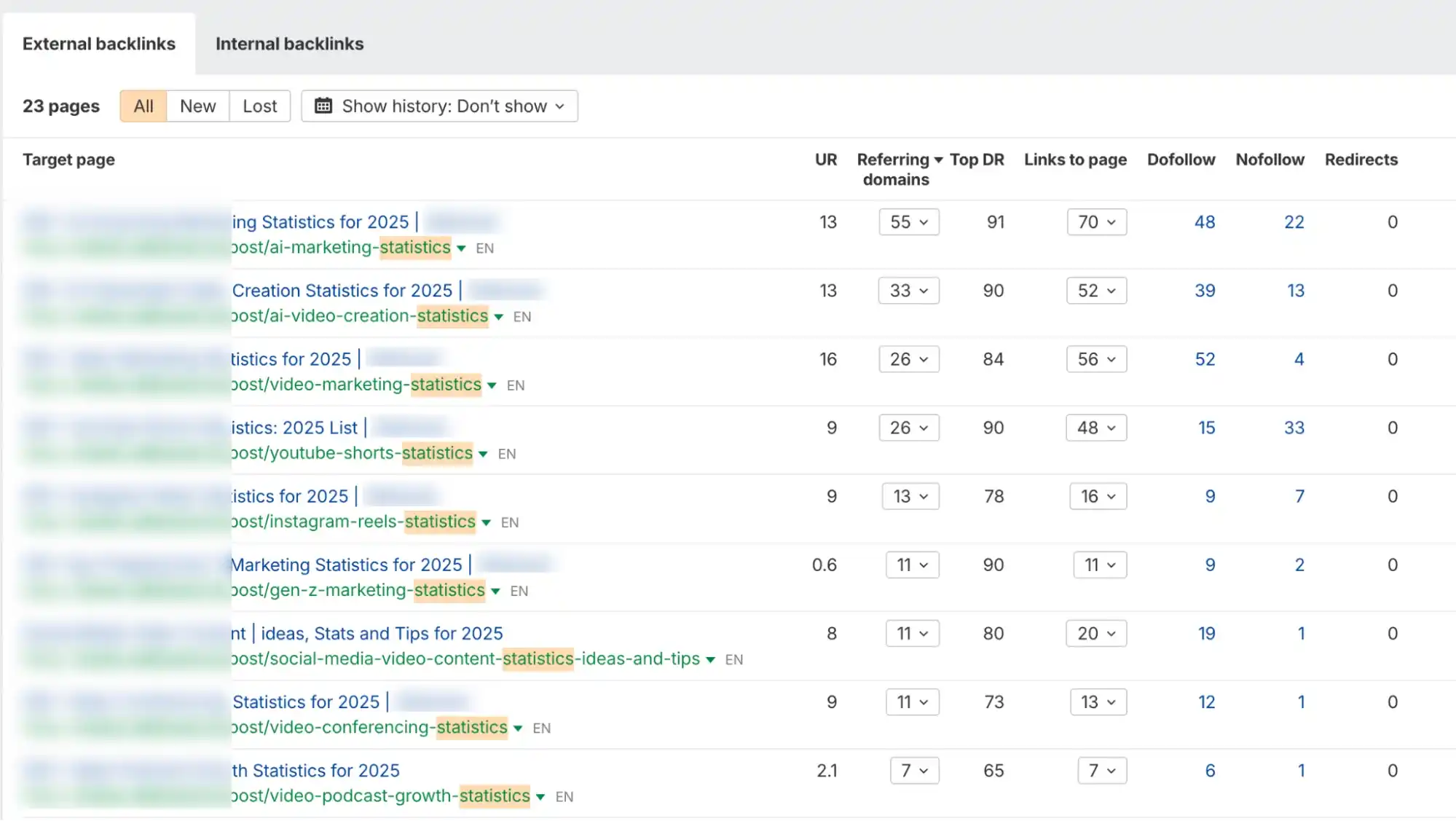
Visual content like infographics, charts, and interactive maps are another powerful linkable asset. They work well because they simplify complex information and make it easy to understand, and people love to share or reference content that saves them time.
Editors and bloggers often look for visuals they can embed in their posts, especially when they don’t have the time or resources to design something themselves.
There are thousands of visual assets published online every day, but not all of them work. I personally get inspired when I scroll through Statista.com. Their charts and infographics are clean, focused, and packed with data that you can not find anywhere else (In most cases)
Here is an example
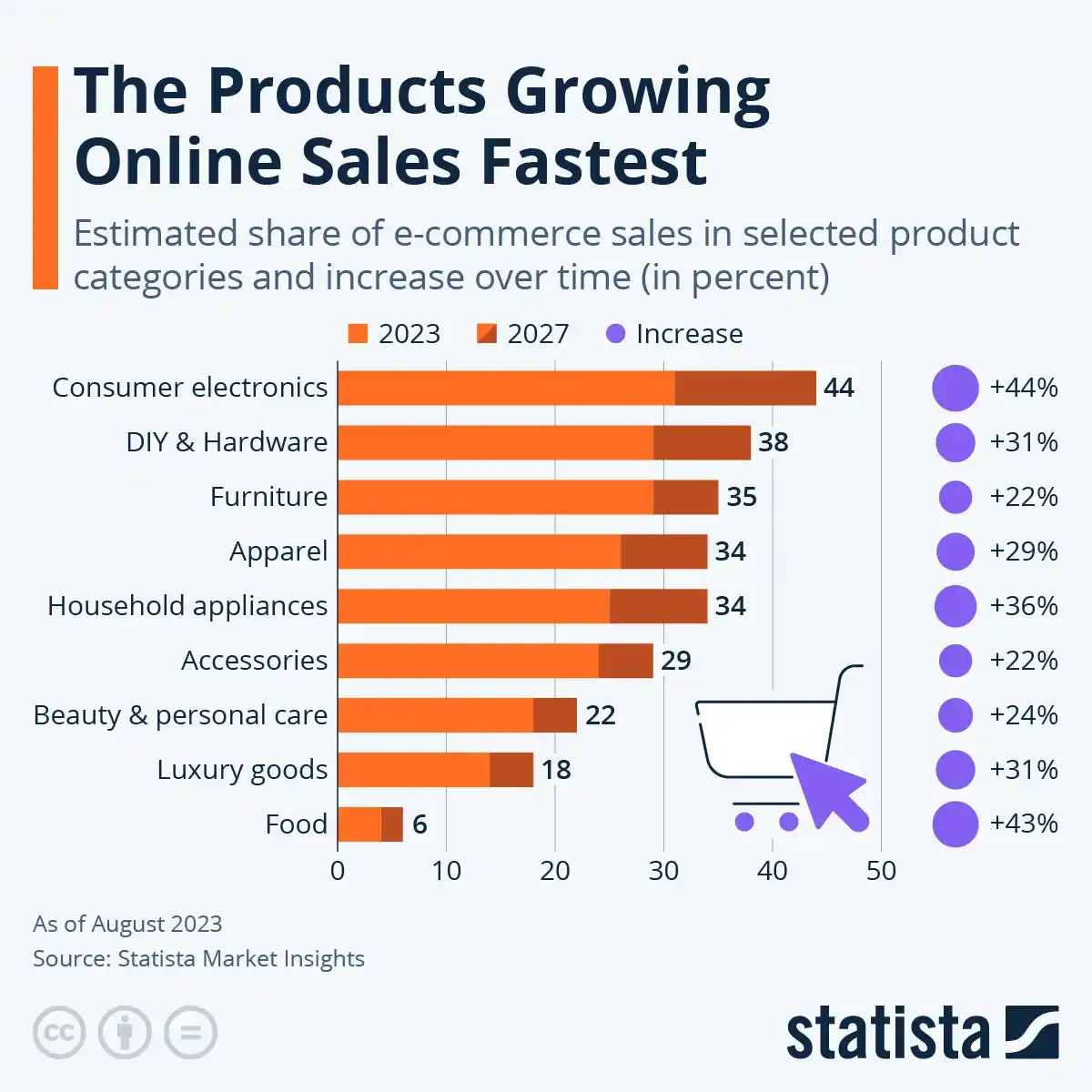
Image source: Statista.com
Creating these assets doesn’t have to break the bank. You can work with a designer or use tools like Canva or Infogram to build them yourself. The key is to base them on solid information. You can take an existing blog post with strong data and turn it into a visual, or compile insights from multiple sources into a clean chart. Then, once it’s published, you can start pitching it to blogs that have written about similar topics.
“How-to” guides are absolutely a form of linkable asset, especially when they’re practical, focused, and helpful. People are always looking for step-by-step solutions to specific problems, and if your guide solves something better than anything else out there, it has a good shot at earning organic backlinks over time.
Unlike statistic pages or data-driven reports, they usually don’t attract hundreds or thousands of backlinks on their own, unless you’re already ranking at the top of search results. Even if your guide is 10x better than everything else, it might not earn links if it’s buried on page two.
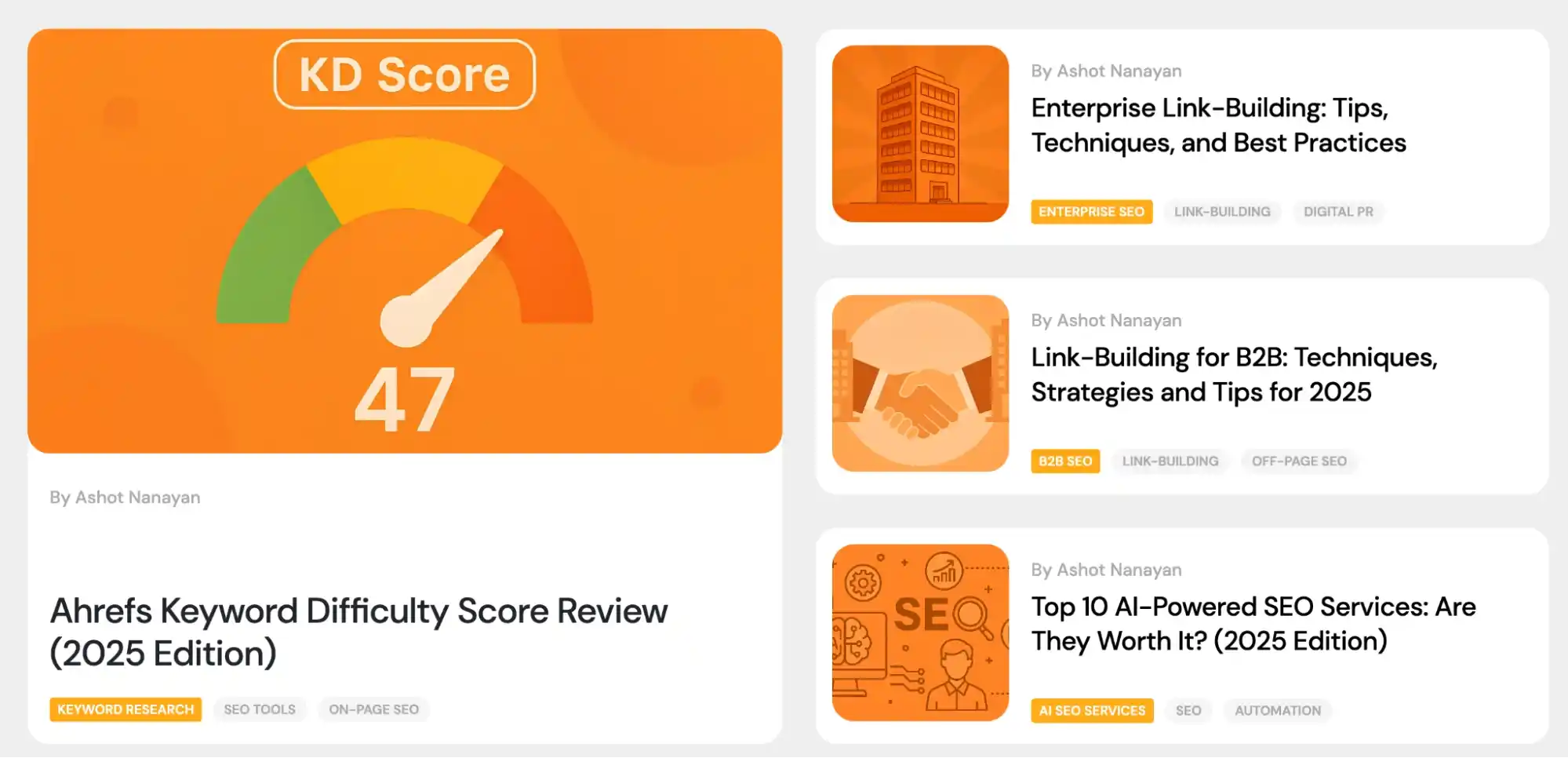
That’s why, before even picking the topic, you should assess your website’s authority. Based on your DR and current rankings, you need to choose keywords and topics with realistic difficulty levels, ones you can compete for. When your guide ranks on the first page, especially in the top five results, it becomes visible to content creators, bloggers, and journalists who are looking for resources to reference.
People love free tools, templates, and calculators, and so do editors and bloggers. We’ve built dozens of them for our clients over the years, especially when running SaaS link-building campaigns. Out of all the formats, calculators often perform the best. Whether it’s a pricing calculator, ROI estimator, or a savings comparison tool, they give users something practical, and that’s what gets people linking.
We’ve also created several free tools, templates, and calculators for our own website. Since the site is still relatively new, we’re not seeing a ton of backlinks yet, but that’s expected.

We’re confident that once these assets start ranking higher in search results, the links will come in naturally. That’s the nature of evergreen value: it pays off over time. If you build something useful and relevant to your audience, it becomes a link magnet the moment it gets visibility.
Case studies and experiments are some of the most trusted and respected linkable assets, but they’re also the most time-consuming. You can’t fake them, and you definitely can’t rely on generic, AI-generated content that repeats what’s already out there. If you want high-quality backlinks, you need to bring something original to the table: real data, real results, and real insights from your own work.
I mean, if you have experience in a specific field, or you’re willing to run an experiment and share your findings, this kind of content can earn serious authority. It doesn’t matter if you’re in SEO, design, SaaS, or even healthcare; people link to real stories backed by data and proof.
Here are the top industries where case studies and experiments attract the most links:
Ultimate lists, in-depth comparisons, and curated resource roundups are another great type of linkable asset, but their performance depends on how well you structure them and whether they offer something new. These formats work because they save people time. Instead of digging through dozens of tabs, readers (and bloggers) can rely on your list or comparison to make a decision faster.
Compared to assets like statistics pages or tools, these might not always attract links quickly. But if you pick the right topic, especially something timely, niche-specific, or hard to compile, they can absolutely earn links consistently. For example, a well-researched comparison between top industry tools or a curated list of AI use cases for a specific profession can easily attract backlinks from blogs, forums, and social shares.
Listen, I’m not trying to scare you, but sometimes, creating a linkable asset takes more than just writing a long article. So, it starts with research, specifically, a strong content gap analysis.
To do this, go to Ahrefs and find the Best by Links report on the left side:
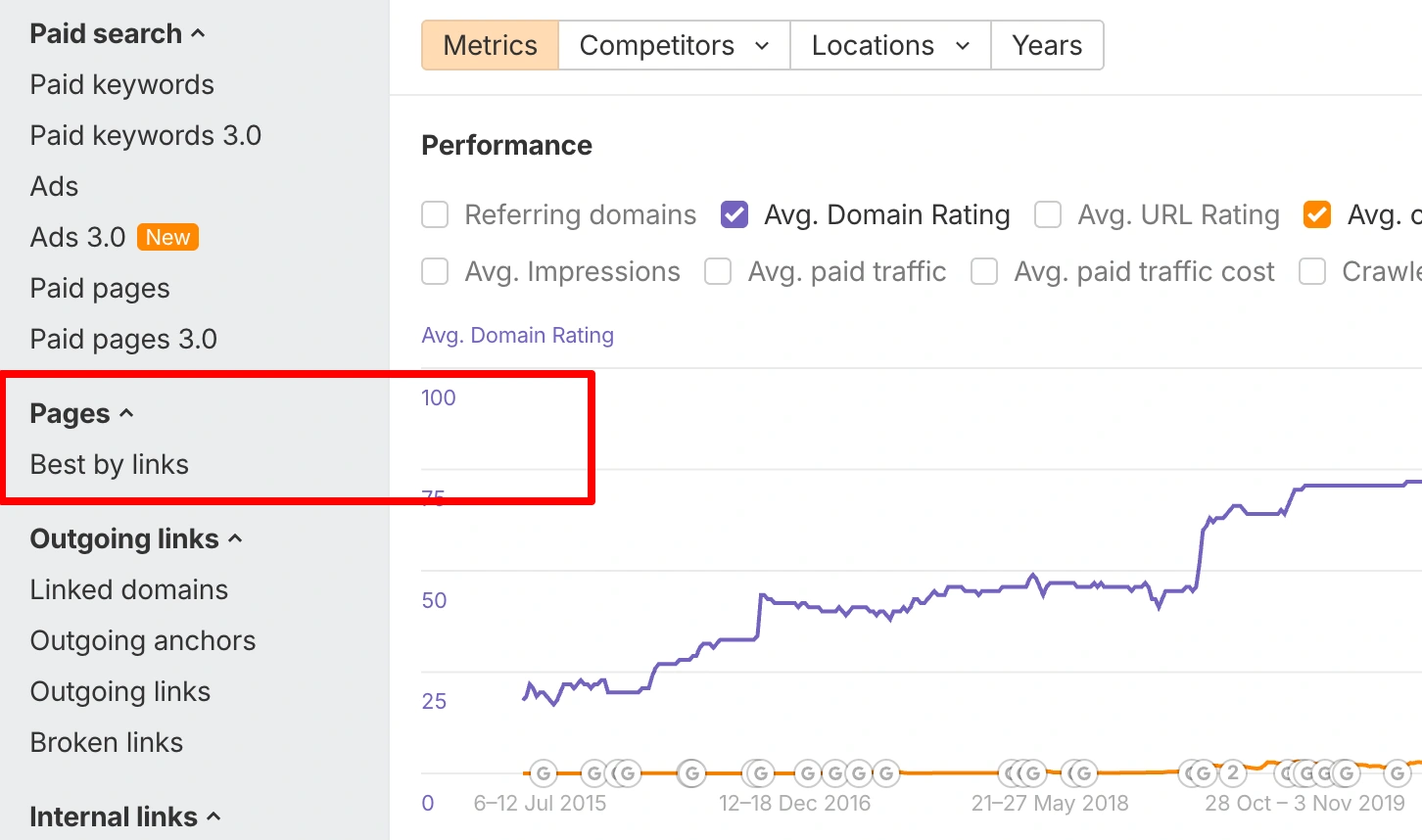
Pay close attention to the type of content: are they statistics pages, how-to guides, calculators, or case studies? Don’t just stop at direct competitors either. Look for niche-relevant websites, even if they’re not offering the same product or service.
Check how those competitors are getting their links. If you want to create something that attracts organic backlinks, make sure your inspiration is earning them naturally.
To do that, filter their top-linked pages by the following keywords in the URLs.
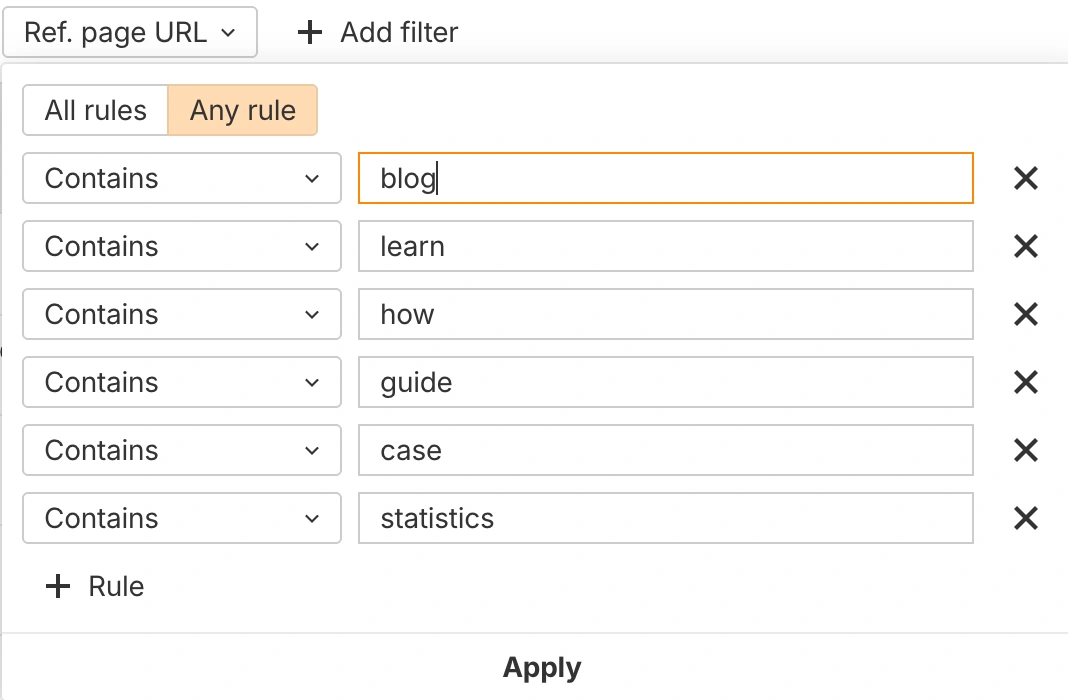
Study their anchor text patterns. If most of the anchor texts are exact match keywords or brand names, and the links come from guest post-looking URLs or the same type of domains, chances are they’re doing link-building. But if you see a mix of anchor texts and diverse sources like blogs, publications, or forums, that’s a good sign that those links were earned, not placed.
Once you have a topic in mind, choose a format that fits your audience. If your target readers are data-hungry professionals, go for research-based pages, tools, or comparison charts.
If they prefer clear takeaways, maybe a case study or a practical how-to will perform better. Don’t just copy someone else’s format; match your audience’s expectations and content style.

Remember, you need to bring something new to the table. That could be firsthand data, an experiment you ran, a fresh visual explanation, or a unique comparison. Add proof wherever you can: screenshots, mini demos, quotes, timelines, or any element that shows this isn’t just another generic page.
Share it, test it, and track how it performs. If no one’s linking after a month or two, revisit the asset. Check if it needs a stronger hook, a clearer title, or maybe a more defined purpose. Then update it and relaunch.
Linkable assets can start earning backlinks within days or weeks if they’re promoted well and picked up by the right audiences. However, in most cases, it takes a few months for them to appear in the top results, especially if your site is new or has low visibility. The speed depends on how well the asset ranks, how shareable it is, and whether you’re actively doing outreach or relying on organic discovery.
Yes, linkable assets still work, even in highly competitive niches, but you need to be more strategic. In crowded spaces, your asset must offer something unique, deeper, or more useful than what’s already out there. Sometimes, the best strategy is to go more niche within your niche, target overlooked angles, or add data, visuals, or fresh insights to stand out.
Why not. Promoting your linkable asset through outreach, guest posting, or internal linking helps it rank higher and get noticed. Even the best assets need a push in the beginning. Once your asset is on the first page of search results, especially in the top few spots, it’s much more likely to earn passive backlinks over time.
Data helps, but it’s not always required. Many linkable assets earn backlinks through strong visuals, unique insights, expert opinions, or simply being the most helpful and organized version of the topic. I mean, original data, studies, or well-compiled statistics give your asset more authority and make it much more likely to be cited by others.